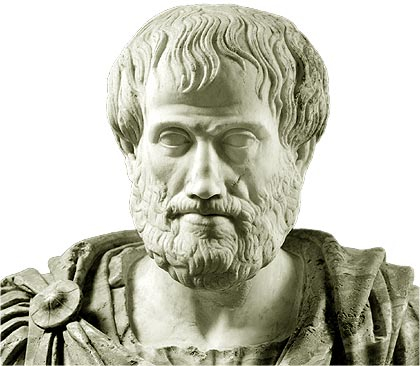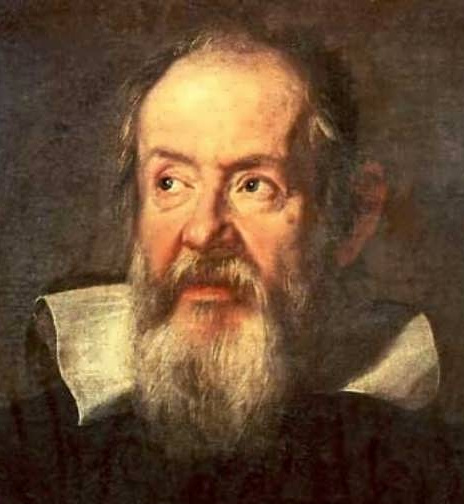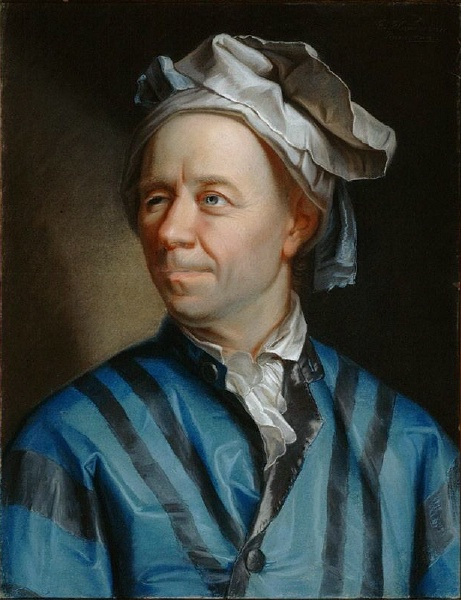Moment
Storyboard
The key to developing the concepts that define what generates translational motion lies in introducing the concept of momentum (originally called 'movement'), which is defined as the product of an object's mass and velocity.
Similarly, in the realm of rotation, the concept of angular momentum is introduced, which is associated with a magnitude akin to mass in translation, known as moment of inertia, along with angular velocity.
ID:(596, 0)
Aristoteles
Description
Since the times of Aristotle, there have been attempts to understand how motion is generated.

Aristotle was the first to attempt to understand the motion of bodies. In his book "De Caelo" (On the Heavens), he sought to comprehend the movement of celestial bodies (planets) as well as bodies on Earth. He concluded that celestial bodies are "perfect" and therefore do not fall, while "sublunary" bodies are imperfect and experience falling. He also proposed that the time it takes for an object to fall is proportional to its mass, a notion that we now know to be false.
According to Aristotle, he believed that objects had a natural place or position where they belonged based on their elemental composition. For example, earthy objects, being composed mainly of earth, were naturally inclined to move toward the center of the Earth, seeking their natural place of rest. This concept was part of Aristotle's broader theory of natural motion and place, which contrasted with the later theories proposed by Galileo and Newton.
ID:(320, 0)
Galileo Galilei
Description
Galileo questioned Aristotle's assertion that the time of descent of objects is proportional to their mass. Through experimental observations, he demonstrated that objects fall to the ground in the same amount of time regardless of their mass. He also challenged another claim by Aristotle that, in the absence of external forces, objects naturally come to rest.

In his book \"Dialogue\" Galileo presented his principle of relativity, which states that the laws of physics are the same in all inertial reference frames. According to this principle, the concept of being at rest or in motion is relative and depends on the observer\'s frame of reference. Galileo\'s ideas laid the foundation for the development of modern physics and marked a shift towards a more empirical and experimental approach to understanding the natural world.
ID:(634, 0)
Euler
Description
In the search for laws that allow us to describe motion, Euler began working with the concept of momentum in 1744.

Euler analyzed how a particle behaves based on what he called "action" at the time, which he defined as the sum of momentum along the path the particle travels. His work laid the foundations for the study of motion and made significant contributions to the development of modern physics.
ID:(635, 0)
Model
Concept
Variables
Parameters
Selected parameter
Calculations
Equation
$ \vec{L} = \vec{r} \times \vec{p} $
&L = &r x &p
$ \vec{p} = m_i \vec{v} $
&p = m_i * &v
$ L = I \omega $
L = I * omega
$ L = r p $
L = r * p
$ L = r p $
L = r * p
$ p = m_i v $
p = m_i * v
$ v = r \omega $
v = r * omega
ID:(15528, 0)
Moment in more dimensions
Equation
Momentum is a measure of the quantity of motion that increases with both mass and velocity.
In cases with more dimensions, velocity becomes a vector and thus so does momentum:
If the moment ($p$) is defined with the inertial Mass ($m_i$) and the speed ($v$) as
| $ p = m_i v $ |
This relationship can be generalized for more than one dimension. In this sense, if we define the vector of the velocidad de las partículas (vector) ($\vec{v}$) and the momento (vector) ($\vec{p}$) as
$\vec{p}=(p_x,p_y,p_z)=(m_iv_x,m_iv_y,m_iv_z)=m_i(v_x,v_y,v_z)=m_i\vec{v}$
then
| $ \vec{p} = m_i \vec{v} $ |
ID:(3599, 0)
Angular Momentum
Equation
The moment ($p$) was defined as the product of the inertial Mass ($m_i$) and the speed ($v$), which is equal to:
| $ p = m_i v $ |
The analogue of the speed ($v$) in the case of rotation is the instantaneous Angular Speed ($\omega$), therefore, the equivalent of the moment ($p$) should be a the angular Momentum ($L$) of the form:
.
the inertial Mass ($m_i$) is associated with the inertia in the translation of a body, so the moment of Inertia ($I$) corresponds to the inertia in the rotation of a body.
ID:(3251, 0)
Angular momentum and moment relationship
Equation
Similar to the relationship between the speed ($v$) and the angular Speed ($\omega$) with the radius ($r$), represented by the equation:
| $ v = r \omega $ |
we can establish a relationship between the angular Momentum ($L$) and the moment ($p$) in the context of translation. However, in this instance, the multiplicative factor is not the arm ($r$), but rather the moment ($p$). The relationship is expressed as:
ID:(9874, 0)
Speed and angular speed
Equation
If we divide the relationship between the distance traveled in a time ($\Delta s$) and the radius ($r$) by the angle variation ($\Delta\theta$),
| $ \Delta s=r \Delta\theta $ |
and then divide it by the time elapsed ($\Delta t$), we obtain the relationship that allows us to calculate the speed ($v$) along the orbit, known as the tangential velocity, which is associated with the angular Speed ($\omega$):
As the mean Speed ($\bar{v}$) is with the distance traveled in a time ($\Delta s$) and the time elapsed ($\Delta t$), equal to
| $ \bar{v} \equiv\displaystyle\frac{ \Delta s }{ \Delta t }$ |
and with the distance traveled in a time ($\Delta s$) expressed as an arc of a circle, and the radius ($r$) and the angle variation ($\Delta\theta$) are
| $ \Delta s=r \Delta\theta $ |
and the definition of the mean angular velocity ($\bar{\omega}$) is
| $ \bar{\omega} \equiv\displaystyle\frac{ \Delta\theta }{ \Delta t }$ |
then,
$v=\displaystyle\frac{\Delta s}{\Delta t}=r\displaystyle\frac{\Delta\theta}{\Delta t}=r\omega$
Since the relationship is general, it can be applied for instantaneous values, resulting in
| $ v = r \omega $ |
.
ID:(3233, 0)
Angular momentum and moment relationship
Equation
Similar to the relationship that exists between linear velocity and angular velocity, represented by the equation:
| $ v = r \omega $ |
we can establish a relationship between angular momentum and translational momentum. However, in this instance, the multiplying factor is not the radius, but rather the moment. The relationship is expressed as:
.
ID:(1072, 0)
Angular momentum and moment
Equation
In one dimension, the angular Momentum ($L$) together with the arm ($r$) and the moment ($p$) equals
| $ L = r p $ |
the angular Momentum ($L$) can be generalized to more dimensions as the angular Momentum (Vector) ($vec{L}$). Since both parameters the radius (vector) ($\vec{r}$) and the momento (vector) ($\vec{p}$) are vectorial, the definition of the angular Momentum (Vector) ($vec{L}$) is constructed through a cross product in the form:
ID:(4774, 0)
